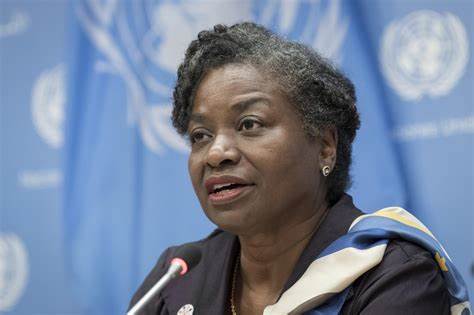Omanyano ovanhu koikundaneki yomalungula kashili paveta, Commisiner Sakaria takunghilile
Veronika Haulenga
Omanyano ovanhu koikundaneki yomalungula kashili paveta, Commisiner Sakaria takunghilile
Veronika Haulenga
Listeners:
Top listeners:
-
play_arrow
Omanyano ovanhu koikundaneki yomalungula kashili paveta, Commisiner Sakaria takunghilile Veronika Haulenga
Antimicrobial resistance is a silent killer that leads to 5 million deaths a year. Solutions must include the poor


Marina Joubert, Stellenbosch University; Phaik Yeong Cheah, University of Oxford, and Sonia Lewycka, Oxford University Clinical Research Unit (OUCRU)
Microbes such as bacteria, viruses, parasites and fungi form part of our everyday lives – they live in us, on us and around us.
We need them for healthy digestion, immune function, and the synthesis of essential nutrients, and we depend on them for farming and industrial processes.
But microbes also cause disease in people, animals and plants. That is why science has developed an arsenal of antimicrobials that kill them or slow their spread.
Over time, microbes develop resistance to antimicrobials, and some eventually evolve into so-called “superbugs” that no longer respond to the drugs. So we see more and more untreatable infections appearing in hospitals and communities.
This phenomenon, known as antimicrobial resistance (AMR), means that common illnesses and diseases may become life-threatening again.
Recent figures show that antimicrobial resistance has been linked to close to 5 million deaths annually – more than the total combined death toll of HIV/AIDS and malaria.
It is further estimated that deaths related to drug-resistance could increase to 10 million per year by 2050, overtaking cancer as a leading cause of death worldwide.
World AMR Awareness Week aims to improve awareness and understanding of this silent killer.
Remembering the poor
We need urgent global action to counter antimicrobial resistance. However, current efforts that focus on solutions developed in high-income settings may not be suited to the societal and economic challenges in low- and middle-income countries.
We are members of a multidisciplinary Global Convening Programme set up by The British Academy to look into solutions to this problem that are fair and inclusive. Our collective expertise includes epidemiology, ethics and human rights.
If we want people to become less dependent on antibiotics, we must address the factors that create dependency on antibiotics in the first place.
Antimicrobial resistance is a global issue, but there are some regional differences.
Most human deaths from antimicrobial resistance occur in sub-Saharan Africa. Drug resistance is a growing concern in malaria and tuberculosis in these regions.
Low-income environments often go hand in hand with the use of cheap antimicrobials that may be of poor quality or even falsified. These create the ideal conditions for resistance to emerge.
Many are sold over the counter for self-diagnosed ailments.
Antibiotics, animals and pandemic risk
Antibiotics are among the most widely used antimicrobials. Between 2000 and 2015 the use of antibiotics increased by 65% worldwide.
Globally, however, more antibiotics are used in animals and agriculture than for human health. Of all antimicrobials, 73% are used in animals raised for food.
In September 2016, the United Nations adopted a unanimous resolution recognising the inappropriate use of antimicrobials in animals as a leading cause of rising antimicrobial resistance.
Farmers rely on antibiotics to prevent disease outbreaks and boost production, especially where animals are kept in unhygienic and overcrowded conditions, and where farmers don’t have access to veterinary care. There antibiotics serve as “quick fixes”.
In one study in rural Uganda a woman told researchers she was using left-over antibiotics to treat family members and her chickens. This repurposing of antibiotics is seen as a way to survive and make a living.
Experts warn that antimicrobial resistance in farm animals, if unchecked, could lead to the next pandemic.
Everybody is exposed, everywhere
Environmental pollution in the form of antimicrobial residues spreads to soils, rivers, streams and oceans, as well as food and drinking water, and contributes to resistance. Everyone is exposed to antimicrobials, especially antibiotics, even if they don’t take these medicines themselves.
This kind of pollution is aggravated when antimicrobials are used and disposed of negligently.
The global response needs to be fair to all
We are calling for a new approach to antimicrobial resistance that prioritises equity and sustainability.
Policy options must be carefully considered with all those involved and by embedding public and community voices without having pre-determined solutions in mind.
“Simple” solutions may disadvantage communities that shoulder the heaviest burden of infections and poor healthcare. For example, banning the over-the-counter sale of antibiotics may help to curb excessive use, but it could also deny life-saving treatment for people who have no other options. Similarly, without antibiotics, small-scale pig and poultry farmers may no longer be able to make a living.
The solution we are working towards is fair and inclusive. It respects people and their traditions while also benefiting human health, animal welfare and the natural environment.![]()
Marina Joubert, Science Communication Researcher, Stellenbosch University; Phaik Yeong Cheah, Professor of Global Health, University of Oxford, and Sonia Lewycka, Epidemiologist, Oxford University Clinical Research Unit (OUCRU)
This article is republished from The Conversation under a Creative Commons license. Read the original article.
Written by: Contributed
Similar posts
Windhoek Weather
Most popular

Mbumba signs off new benefits for retired political office bearers

Former FNB employee arrested after defraud pensioner off N$215, 000

Namdia Heist: More questions, lots of confusion

Omuhwahwameki Michael okuunganeka oshikonga shoku patitha oostola dho Rani moshilongo ashihe.

Windhoek woman loses N$60,000 to fraudsters
Copyright 2025 Future Media (Pty) Ltd | Website by Digital Platforms
Tel: +264 83 000 1000 | Email: news@futuremedia.com.na





